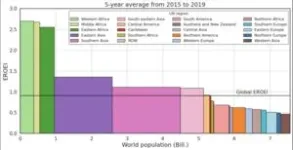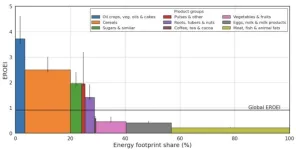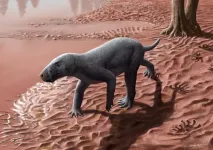Gruyère cheese, or a history of the domestication of bacteria
2024-12-17
(Press-News.org)
The domestication of plants and animals has played a key role in the development of human societies. And microbes, too, have been tamed: a study by UNIL, published in the journal Nature Communications, shows that the bacteria used to produce Gruyère, Emmental and Sbrinz cheese show signs of ancient domestication.
The domestication of livestock and plants marked an important stage in the settlement of human populations in the Neolithic period, as they moved from a hunter-gatherer lifestyle to a subsistence model based on animal husbandry and agriculture. Because of the microscopic size and virtual absence of fossils of micro-organisms, their domestication is more difficult to prove than that of flora and fauna. Although several studies have already demonstrated this in the case of yeasts (microscopic, single-celled fungi with nuclei), the case of bacteria (micro-organisms that are mainly single-celled and have no nuclei) has yet to be elucidated. This was the objective of Vincent Somerville, a former doctoral student in Philipp Engel's team at the Department of Fundamental Microbiology (DFM) in the Faculty of Biology and Medicine at UNIL. The results of his latest study, carried out under the co-direction of Florent Mazel and in collaboration with Agroscope, have been published in the journal Nature Communications.
An old process
Domestication consists of artificially selecting - generation after generation - variants of a wild species that have developed interesting characteristics for agriculture or livestock farming, such as the nutritional quality of plants or the size and docility of animals. As human population has grown throughout history, and food demand has increased, long-term storage solutions were needed. ‘This is the case with fermentation, which converts sugars into acids, protects against the proliferation of undesirable microbes and therefore enables food to be preserved for longer,’ explains Philipp Engel, co-director of the study. This technique, which dates back several thousand years, uses micro-organisms such as yeast to make beer or wine, or bacteria to make cheese. The first indirect archaeological evidence of milk fermentation dates back around 10,000 years, to the Neolithic period.
Swiss cheeses as study subjects
Thanks to collaboration with Agroscope, the Swiss centre of competence for agronomic and food research, the Lausanne group had access to a collection of bacterial strains used in the production of three different Swiss cheeses: Gruyère, Emmental and Sbrinz, and stored for 50 years. ‘These cultures, also called “cheese starter cultures” were partially reactivated to create some sort of laboratory mini cheeses’, explains Vincent Somerville, first author of the article. ‘We then analysed the evolution of the genetic and phenotypic characteristics of this collection over time in order to identify markers indicative of domestication. By observing more than 100 bacterial isolates and almost 1,000 samples, the scientists found, respectively, low genetic diversity and high stability of traits specific to the food preservation process (for example, acidification) over this half-century period. Those are indicators of an ancient, or even very ancient, adaptation, which by extrapolation corresponds to the appearance of the first fermented dairy products. ‘The temporal concordance between the dating of the micro-organisms and the archaeological history of this fermented food was quite unexpected’, enthuses researcher Florent Mazel. In other words, it is possible to trace the past of the domestication of bacteria from Swiss cheeses.
Guaranteeing food safety
In the future, cheeses from different parts of the world could be compared in order to generalize the study. In addition, research into the domestication of bacterial communities used to initiate the fermentation of other products, such as kefir, looks promising. ‘A better understanding of bacterial domestication will enable us to optimize the characteristics of these microbiota, improve the use of this process and make it a more sustainable method of food storage’, hopes Florent Mazel.
Additional link:
More info on the Swiss National Centre of Competence in Research (NCCR) Microbiomes
END
ELSE PRESS RELEASES FROM THIS DATE:
2024-12-17
A Perspective summarizes the risks of bypassing natural selection when using assisted reproductive technologies (ART) in humans and livestock. The authors call for dialogue between the fields of assisted reproduction and evolutionary biology.
Jonathan P. Evans and Francisco Garcia-Gonzalez detail how techniques used in ART, including in vitro fertilization, artificial insemination, and intracytoplasmic sperm injection, can stress and damage gametes and embryos and lead to deleterious epigenetic changes in offspring. Some ART techniques also bypass a system of filters in the female reproductive tract that select healthy sperm and may lead to better genetic matches with ...
2024-12-17
Almost three quarters of adolescents in Australia experience clinically significant depression or anxiety symptoms, with most being chronic, according to a new study. And preventive strategies outside our clinics are urgently required to address this considerable public health problem facing the nation.
The research, led by Murdoch Children’s Research Institute (MCRI) and published in The Lancet Psychiatry, found mental health problems were frequently chronic with 64 per cent reporting symptoms three or more times across their adolescent years.
MCRI Dr Ellie Robson said the rate and ...
2024-12-17
A primary output of agriculture is food, an energy source for the human body. But agriculture also requires energy inputs. Kajwan Rasul and colleagues calculated the global energy return on investment for agriculture over time from 1995 to 2019. The authors constructed a model using two existing models, one that captures the energy use of agriculture and food processing and another that captures flows of agricultural commodities. The authors find that the return on energy investment for global agriculture has increased from .68 to .91 over ...
2024-12-17
Most major large language models (LLMs) can quickly tell when they are being given a personality test and will tweak their responses to provide more socially desirable results—a finding with implications for any study using LLMs as a stand-in for humans. Aadesh Salecha and colleagues gave LLMs from OpenAI, Anthropic, Google, and Meta the classic Big 5 personality test, which is a survey that measures Extraversion, Openness to Experience, Conscientiousness, Agreeableness, and Neuroticism. Researchers have given ...
2024-12-17
Chimeric antigen receptor (CAR) T-cell therapy is a type of cancer immunotherapy where patients’ T-cells are collected and genetically modified to produce chimeric antigen receptors that recognize specific targets on cancer cells, allowing these T-cells to locate and destroy the cancer cells. CAR T-cell therapy shows promising results in treating relapsing or refractory B-cell lymphomas. To explore the risks associated with CAR T-cell therapy, researchers from Juntendo University, Japan, including Professor Jun Ando, Professor Miki Ando, and Dr. Erina Hosoya, published a study in Haematologica on October 17, 2024.
Elaborating about this study further, Dr. Hosoya, ...
2024-12-17
After taking the first images of black holes, the ground-breaking Event Horizon Telescope (EHT) is poised to reveal how black holes launch powerful jets into space. Now, a research team led by Anne-Kathrin Baczko from Chalmers University of Technology in Sweden has shown that the EHT will be able to make exciting images of a supermassive black hole and its jets in the galaxy NGC 1052. The measurements, made with interconnected radio telescopes, also confirm strong magnetic fields close to the black hole’s edge.
The main research question for the project’s ...
2024-12-17
LOS ANGELES — USC Norris Cancer Hospital was named a Top Teaching Hospital by The Leapfrog Group, a leading national patient safety watchdog organization, for the fourth consecutive year.
“The Leapfrog Top Hospital award is one of the most competitive awards a hospital can receive, and we are delighted that USC Norris Cancer Hospital places among the highest-rated hospitals in the nation once again,” said Marty Sargeant, MBA, CEO of Keck Medical Center of USC, which includes USC Norris Cancer Hospital.
To qualify for the distinction, hospitals must rank top among peers ...
2024-12-17
The formation of blood vessels is a complex process involving the interplay of proteins and mechanic forces. In two studies, a research team at the Biozentrum of the University of Basel, Switzerland, has uncovered new mechanisms in blood vessel formation. The team demonstrated how cells interact during vascular lumen formation and the critical role of dynamic forces in this process. These new insights into blood vessel formation may provide potential approaches in the treatment of vascular diseases.
Blood vessels run throughout the entire body, delivering nutrients and oxygen through the circulating blood. During vessel formation, cells first form local ...
2024-12-17
Gorgonopsians are an extinct group of synapsids that lived during the Permian, between 270 and 250 million years ago. They belong to the evolutionary lineage that would give rise to the first mammals 50 million years later. They were warm-blooded animals like modern mammals, but, unlike most of them, they laid eggs. They were carnivorous and were the first animals to develop the characteristic saber teeth. They were often the superpredators of the ecosystems in which they lived, and their appearance would be similar to a dog, ...
2024-12-17
The first true mammals evolved roughly 200 million years ago, during the early days of the dinosaurs. But mammals are the last surviving members of an older group, called the therapsids. At first glance, many therapsids weren’t obviously mammal-like , but they also had subtle features that we recognize in mammals today, like a hole on the sides of their skull for the jaw muscle to attach and structures on their jaw bones that would eventually evolve into mammals' distinctive middle ear bones. In a new paper in the journal Nature Communications, scientists announce the discovery of a fossil therapsid ...
LAST 30 PRESS RELEASES:
[Press-News.org] Gruyère cheese, or a history of the domestication of bacteria










